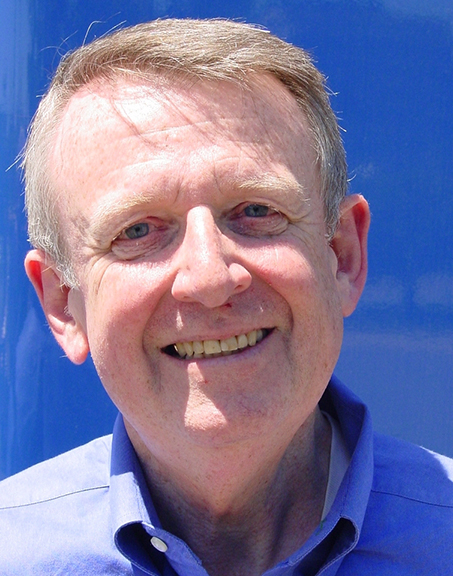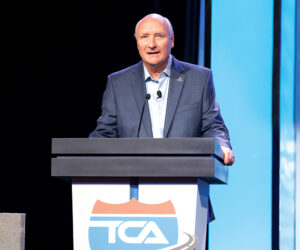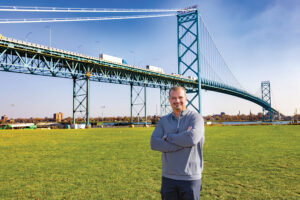Dear Wikipedia:
Since you have become perhaps the most widely Googled “encyclopedia” in the United States with the disappearance of the best-known printed volumes (R.I.P., World Book Encyclopedia and Encyclopedia Britannica), I want to call your attention to a shortcoming in your article on electronic logging devices (ELDs). Since you encourage readers to improve your articles, I want to do just that.
You accurately say an ELD is “electronic hardware that is attached to a commercial motor vehicle engine to record driving hours. An ELD monitors a vehicle’s engine to capture data on whether the engine is running, whether the vehicle is moving, miles driven, and duration of engine operation.”
Your shortcoming is found in the fact that you do not mention how the trucking industry is using the data created by an ELD to improve the industry in many other arenas, such as visibility into driver behavior and safety, GPS truck tracking, vehicle diagnostics, route analysis, and accident detection.
I hope the information below will help add to your article. It comes from two executives based on
interaction with motor carrier executives.
Sincerely,
A grateful trucking stakeholder.
“Wow. Where do I begin? First and foremost, in its very basic state, [ELDs] track compliance with the hours of service, but it does so, so much more,” said David Heller, vice president of government affairs at the
Truckload Carriers Association.
“Where the value comes in is getting everybody onto a digital platform,” said Doug Schrier, vice president of product and innovation at Transflo, which offers a portfolio of mobile, telematics, and business process automation software for the transportation industry. “You have the ability to automate more than 120 different activities from the time a driver leaves the house until they return.”
Put simply, ELDs provide motor carrier executives and state and federal regulators a glimpse into the day of a driver.
In fact, Heller said information from ELDs are directly responsible to forging hours of service rules.
“For instance, if you look at the reason for the new HOS rule that goes into effect September 29, that rule is based on data that was generated through ELDs,” Heller noted. “By looking at that data and interpreting that data, we obviously have developed a rule that makes more sense for today’s drivers. What’s more, a new HOS rule based upon data generated by ELDs can not only benefit the driver, but also benefit the nation because these drivers can be safer because they’re afforded flexibility to operate in a safe space.”
“Yeah, absolutely,” Schrier said when asked if he felt ELD data influenced the development of the new HOS rule, pointing to the flexibility for the driver to use different sleeper berth combinations and the ability to stop the clock for adverse conditions.
“Think about it,” he said. “You’re running into Chicago. You’re going to hit the perimeter of Chicago at 4 o’clock and you need to deliver a load the next morning. You have some really tough decisions to make because of the lack of flexibility with the current rule. I’m either going to have to sit in traffic today and fight it tonight to get inside the city before I take my 10-hour break and hopefully, I can find parking or I hang outside the city.”
Now, the driver has the option of extending the 14-hour window.
Both Heller and Schrier are hopeful that ELDs can help develop a regulation dealing with driver retention, an issue that ranks high on the American Transportation Research Institute’s Top 10 List of Industry Concerns.
It’s a problem drivers often complain about when talking with their driver manager, both men say.
“Detention is something that has been bought off by auditing companies or the freight payer,” Schrier said. “With an ELD, pretty much every second of a truck’s movement is tracked, and it shows you were in the proximity of the yard at your appointment claim,” helping to refute the shippers’ and receivers’ claim that detention was the fault of the driver.
Solving the detention issue with the help of ELD data is a safety issue, too.
“Studies show drivers drive faster after getting out of a detention event,” Heller said.
Carriers tend to forget how they can use ELD to enhance fuel consumption through better utilization of routes, Schrier said.
“Of course, the ELD will give them the route they took, and we work with commercial navigation systems to produce the data,” Schrier said. “One of the safest miles is a mile never driven. The ELD will help do two things. First, it will make sure the driver has the correct route, and second, that it is the optimal route. You don’t want to have a driver have an accident on a road they shouldn’t have been on. You hear about these unnecessary accidents all the time.”
Heller said utilization of ELD data could be expanded into other areas, such as driver training.
“Think of the expanded training opportunities that you can provide the drivers,” he said. “ELDs coupled with cameras through a telematic-typed base system with cameras can record hard braking, lane-departure incidents, or even more so, what the driver’s viewpoint is out the window. Coupled with ELDs, these systems can give a roadmap of sorts to show what kind of driving aspects you may need to freshen drivers up on. Twenty years ago, I don’t think anybody ever thought these things would ever be possible. But here we are in a world where we can provide the training techniques to drivers to improve upon their performance. It will take time, but the industry will get better at using ELD as an opportunity to reduce accidents on our roadways.
“We’ve only reached the tip of the iceberg when it comes to using ELD-produced information to better our industry,” he concluded.
Lyndon Finney’s publishing career spans over 55 years beginning with a reporter position with the Southwest Times Record in Fort Smith, Arkansas, in 1965. Since then he’s been a newspaper editor at the Southwest Times Record, served five years as assistant managing editor of the Arkansas Democrat-Gazette in Little Rock and from November 2004 through December 2019 served as editor of The Trucker. Between newspaper jobs he spent 14 years as director of communications at Baptist Health, Arkansas’ largest healthcare system. In addition to his publishing career he served for 46 years as organist at Little Rock’s largest Baptist church.















